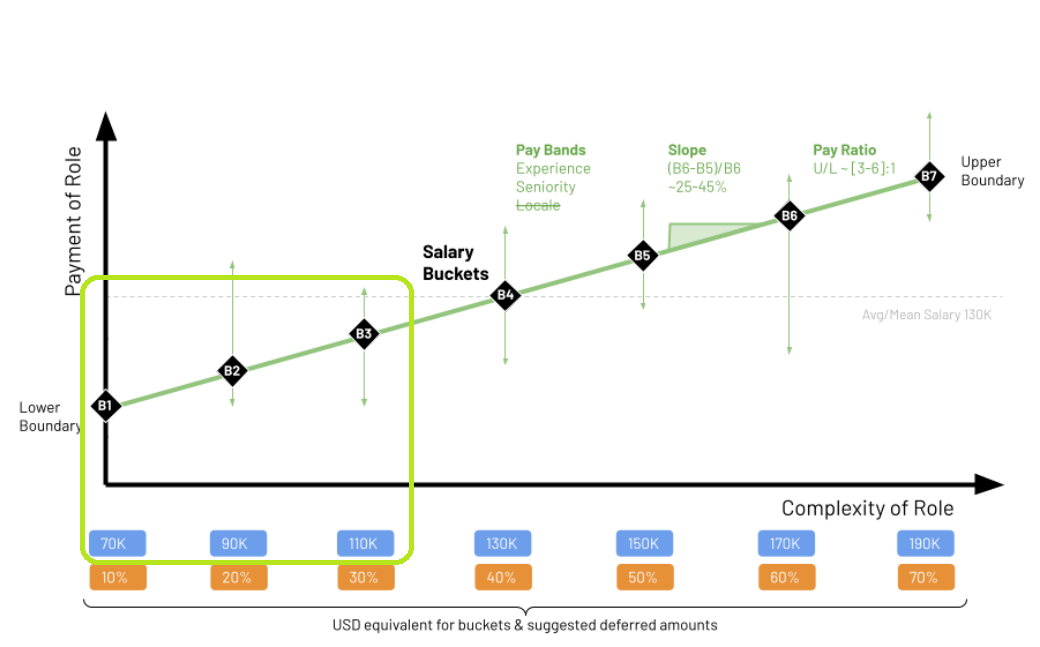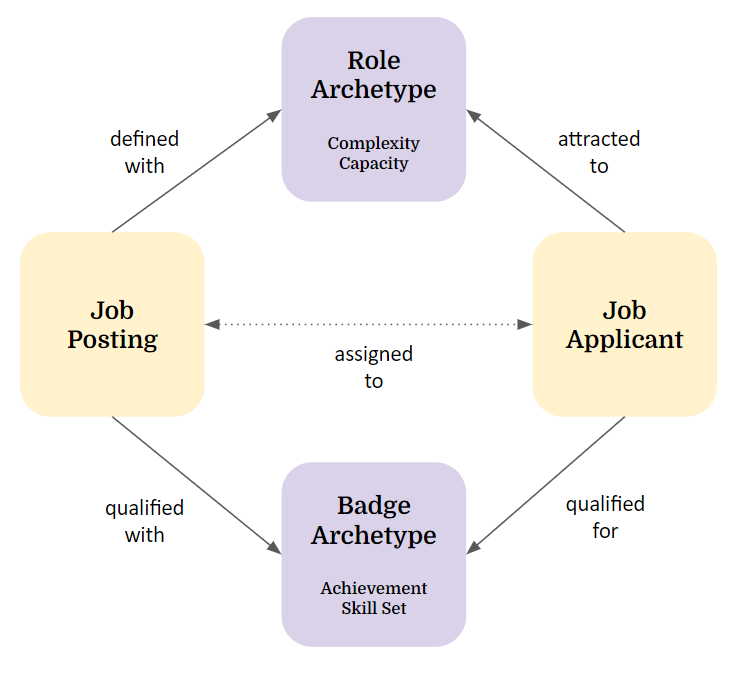Samara's Compensation Model
Premise
Compensation
The compensation in Samara is based on a token mix that consists of SAMARA equity/value, SVOICE voice token, HUSD USD equivalent and possibly SEEDS (if the organization has a reserve). This mix is determined by a "formula" that converts the USD Equivalent into the right mix of tokens. Each member can decide on the %DEFERRED, meaning how much of the income should be paid in SAMARA tokens vs. HUSD tokens. See the Samara Token page for more details on each of the tokens in use. The current income formula for Samara is
1 USD Equivalent = 1 SAMARA * (%DEFERRED) + 1 SVOICE + 1 HUSD * (1 - %DEFERRED)
Salary Bands
Defining a salary for a role is an extremely difficult task to do. There are many, many variables playing a part in the decision to find a fair and equitable salary for everyone in the organization.
For these early stages Samara is using three salary bands, namely B1 ($70k/year), B2 ($90k/year) and B3 ($110k/year). These bands are directly connected with the commitment levels, B1 for up to 49%, B2 for 50% - 79% and B3 for over 80%. 
Commitment
We define commitment as “mindshare” (not how many hours per week you work in an assignment). For example, a commitment level of 100% is equivalent to having your awareness being fully present and focused on a single assignment.
Members propose their commitment at the start of the cycle period and self-assess their actual contribution level after the cycle period ended and can then adjust the levels up or down to reflect personal changes in the contribution or based on the results of the Collective Evaluation process.
The Collective Evaluation process is a Community building exercise where at the end of a cycle the team comes together to assess each-other contribution.
Minimum commitment in Samara is 30% for regular assignments. Please note that your total level of commitment for the sum of all assignments cannot exceed 100%.
Compensation - futureFuture models for role and badge archetype
The goal is to match qualified applicants with open job postings. In traditional job markets, this process is overtaxing, one-sided, prone to trial & error and a guessing game between pretense & perception. In a decentralized human organization, we are using role archetypes as attractors for applicants and badge archetypes as qualifiers for applicants to optimize the matching process and to reduce biases. Role archetypes represent the complexity of the job and the capacity of the organization to fill in positions (e.g. the organization might have room for 5 storytellers at a complexity level of B3). Badge archetypes represent achievements and skillsets of applicants. Both archetypes are used to find the right applicant for the assignment.

